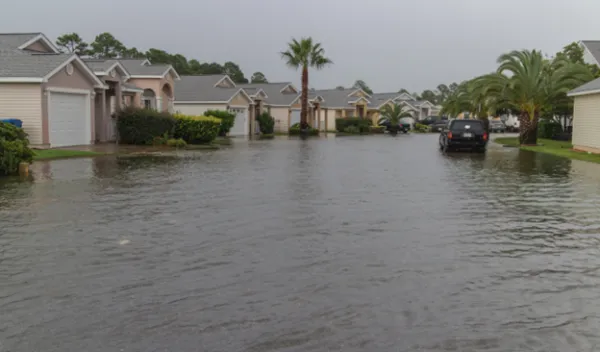
New model adds human reactions to flood risk assessment
Researchers at North Carolina State University have created a land-change model that simulates interactions between urban growth, increased flooding and human response. The new model could offer a more realistic assessment of risk for urban planners, natural resource managers and other local government stakeholders.
The work appears in Scientific Reports and is supported in part by the U.S. National Science Foundation Smart and Connected Communities program.
"It's crucial for models to consider our collective adaptation efforts, like elevating buildings or moving away from high-risk zones," says Georgina Sanchez, a researcher in NC State's Center for Geospatial Analytics and corresponding author of the work. "Our model provides deeper insights, helping us understand adaptive capacities and identify communities with limited resources, essentially characterizing the geography of impact and response."
The model, FUTURES 3.0 (FUTure Urban-Regional Environment Simulation), is an open-source, scalable model that includes three components of flood risk: exposure, which refers to urban development patterns; hazard, which includes increases in flooding due to climate change; and vulnerability, or the adaptive response of people living in the area. The model incorporates climate data as well as demographic, socioeconomic and flood-damage data.
The researchers used the greater Charleston, South Carolina, metropolitan area as their test case. Charleston is a rapidly developing urban area located in a low-lying region bordered by the Atlantic Ocean and numerous rivers.
By comparing land change projections for 2035 and 2050 against a 2020 baseline and across various policy intervention and response scenarios, they envisioned possible demographic and population shifts and identified which scenarios resulted in the least exposure to future flooding, as well as where flood risk remained highest across the landscape.
Sanchez says, "Not all residents or communities will have the means or capacity to build protective measures. Visualizing potential 'what-if' scenarios helps us consider the where and when of impact, and understand who is being affected and how."
The researchers' next steps are to engage with communities to discuss potential interventions. They are also expanding their studies at a regional scale.
"These scenarios let us visualize the long-term consequences of our current development choices," Sanchez continues. "If we anticipate that 30 years from now a newly developed community may face the decision to retreat, why not think about protecting that area now?"
